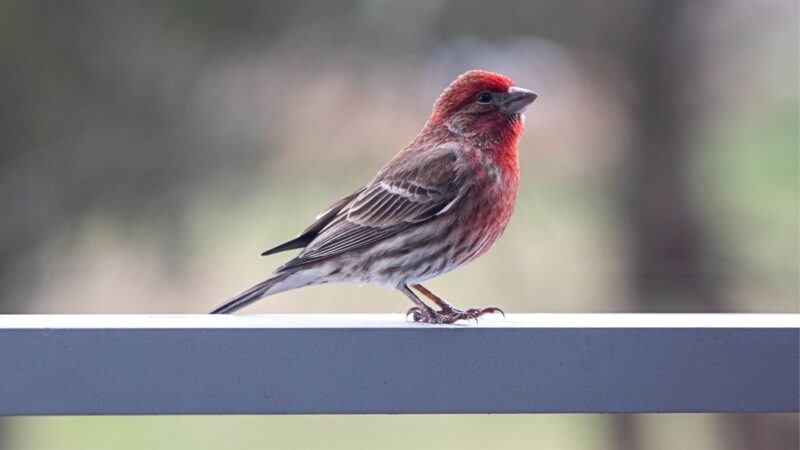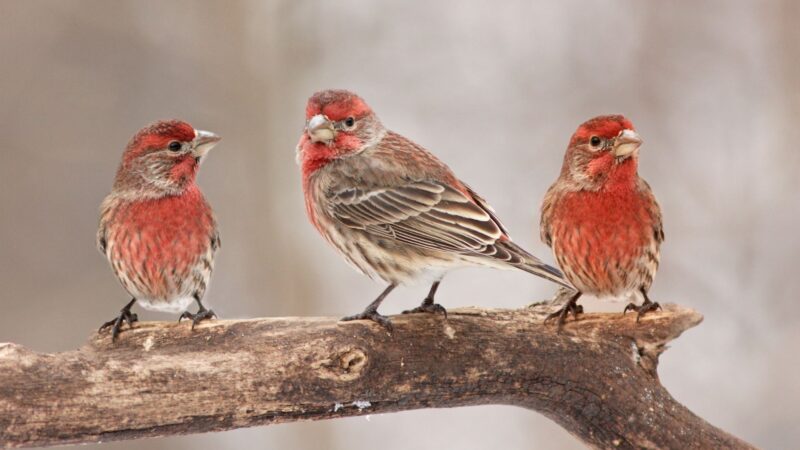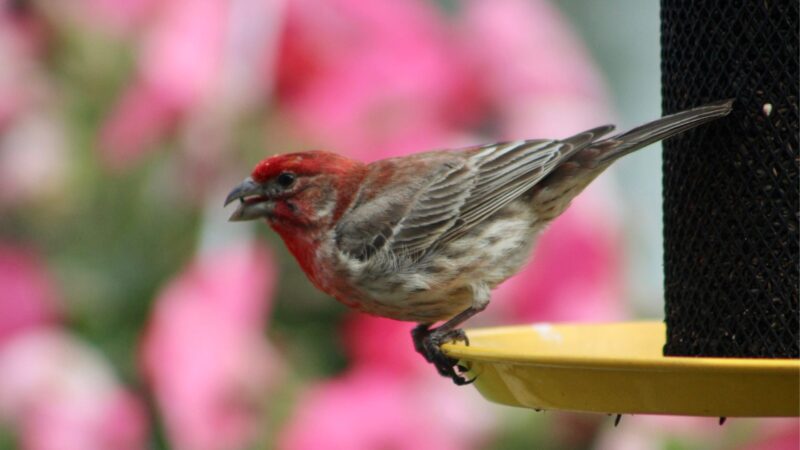Are you familiar with the red-feathered house finch? You may not be aware of it yet but they may become quite a problem if they enter your property. Luckily, this article has everything you need to know about getting rid of them.
So, how to get rid of house finches? Remove potential nesting sites, securing fruit trees and other desirable crops, and using a combination of bird repellents will help you successfully keep them away.
If you want to know more about house finches, how to accurately identify them, and preventive strategies you can employ in dealing with them, simply finish reading this comprehensive guide!
What Is a House Finch?

Identification
Characterized by their prominent rosy red plumage on their face, head, and upper chest, house finches are small-bodied songbirds with short wings, large beaks, notched tails, and brown streaks. Females are duller in color, looking more grayish-brown with faded streaks.
Habitat
These birds have a native range extending towards the western United States but populations were also introduced in the eastern US. They are well-adapted to urban and suburban areas, especially where lawns and buildings are present. They also occupy forest edges, farms, and open deserts.
Diet and Feeding
House finches have herbivorous diets that mainly consist of grains, buds, seeds, and fruits. They also occasionally feed on plant lice and beetle larvae. Unlike other finches, they are able to forage both in trees and on the ground. They need to drink water at least once daily.
Behavior
House birds are diurnal, or active during the day, and are social birds that often nest together with small flocks. Their calls are made up of “weet” or “kweat” sounds.
Migration Pattern
Most house finches belonging to their native range are not migratory. However, some birds in the eastern US migrate to the southern states where it is warmer during the winter.
Nesting
Female house finches construct nests made out of hair, grass, and other fibers. These nests are typically placed in buildings, tree cavities or branches, cacti, or in bird boxes. They lay 3 to 6 greenish-white or bluish eggs per clutch and may produce as many as 6 clutches in one season.
Related: How to Keep Birds From Nesting on Porch? | The Effective Guide
House Finch vs. Purple Finch

You may get the two mixed up due to their similar appearance. The main difference is that purple finches are more wine red in color while house finches are a starker, more vibrant shade of red. Purple finches are also bigger than house finches.
Related: How to Get Rid of Monk Parakeets? | Ways to Discourage Them
Where Do House Finches Nest?
As mentioned earlier, house finches build their nests in a variety of areas. In urban and suburban environments, they nest in or on buildings, street lamps, ledges, hanging planters, and vents. In the wild, they prefer to nest in coniferous and deciduous trees as well as on rock ledges and cacti.
Related: How to Prevent Birds Nesting in Roof? | Information and Control Guide
Are House Finches Known to Enter Homes or Yards?

There have been no cases of house finches entering homes. However, they are definitely known to cause problems in lawns and yards. You can typically find them in your bird feeders, roof eaves, trees, and other vegetation.
Related: How to Get Rid of Northern Mockingbird? | 7 Simple Ways
Do House Finches Harm People or Property?
House finches are not known to directly injure people and pets, but they do damage property. Since they tend to nest around homes and in trees, they may cause blockage in gutters and destroy roof shingles.
Since they may come in flocks, their fecal droppings become unsightly and can spread diseases to native birds as they infect bird feeders.
Related: How to Get Rid of Seagulls | Effective Strategies and Prevention
How to Get Rid of House Finches?
Now that you know why house finches are a nuisance and can cause plenty of problems for you, here are strategies you can use to get rid of them:
- Remove potential nesting sites in your yard and around your home. Cut down tree branches, shrubs, and other vegetation if necessary. Close off all entry points and openings in your house that the birds may use. For vents, properly install screens.
- Secure your fruit trees and desirable crops using durable, weather-resistant netting. You can also add it to other areas where birds frequently perch or roost.
- Use a combination of bird repellents, such as the following:
- Visual: fake predators, predator kites, scarecrows, eyespot balloons, and reflective tape
- Auditory: Ultrasonic sound devices and distress call sound systems
- Physical: Bird repellent spray (methyl anthranilate), gels (polybutene-based), and bird spikes.
Make sure to reposition these repellents regularly so that the birds don’t get used to them.
Related: How to Get Rid of Cliff Swallows? | 5 Effective Methods
How to Prevent House Finches From Coming Back?

After getting rid of finches, it is important to keep preventive measures in place so that they avoid coming back to your property ever. Here are methods you can employ:
- Regularly keep your yard or lawn clean. Do so by disposing of any food sources such as wasted seed and fallen fruit. Keep your garbage bins closed.
- Consider switching to other types of bird feeders that exclude finches while simultaneously attracting other native birds. Examples are platform feeders and caged feeders. Avoid using nyjer and fruit feeders as these are specifically designed to harbor finches.
- Install a combination of the bird repellents mentioned earlier and make sure to reposition them regularly.
- Conduct regular monitoring of your property. Look out for any possible nesting sites and entry points then address these issues immediately.
The key to successfully getting rid of and preventing house finches from entering your property is consistency and being proactive.
Related: How to Keep Birds Away From Your Car? | Control and Prevention
List of Sources
All About Birds. (n.d.). House Finch.
Dewey, T., Kirschbaum, K., & Pappas, J.. (n.d.). Carpodacus mexicanus: house finch.
Sterling, R. (n.d.). Carpodacus purpureus: purple finch.
Willcox, E. V., Hostetler, M. E., Main, M. B., & Voigt, M. (2019). Attracting Backyard Birds: Bird Feeder Selection.
Vantassel, S. M., Hygnstrom, S. E., Curtis, P. D., Smith, R., & Hygnstrom, J. (2013). Structural Pest Control Program Bird Management Manual.
- How to Get Rid of Copperheads | Practical Guide - August 27, 2023
- How to Get Rid of Corn Snakes | What Makes Them Aggressive? - August 27, 2023
- How to Get Rid of Alligators | Safety Measures and Removal Methods - July 16, 2023
